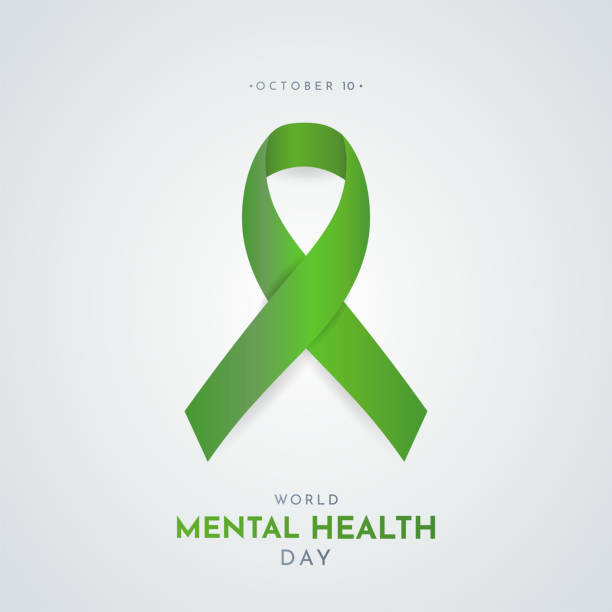The Difference between “Sex” and “Gender”?
“Sex” is an objective biological variable. For example, you have the biological aspects of a male, female, or intersex (hermaphrodite). Sex is defined by anatomy, your external and internal reproductive organs. As well as secondary characteristics after puberty, such as pubic hair, voice, and breasts. Your chromosomes also define your sex. Females have XX, males have XY, intersex has XO, XO/XY, XYY, or XXY.
“Gender” is a psychological variable. An individual subjectively names themselves as a particular gender. Some examples include:
- Cisgender Male: A biological male identifying as a male
- Cisgender Female: A biological female identifying as a female
- Transgender Male: A biological female identifying as a male
- Transgender Female: A biological male identifying as a female
- Agender: An individual who does NOT identify with any gender, or they have no gender at all
- Androgyne: An individual who has a gender that is either both masculine and feminine or between masculine and feminine
- Bigender: An individual who has two genders and often displays cultural masculine and feminine roles
- Gender Expansive: The LGBTQIA Resource Center define this as an “umbrella term used for individuals who broaden their own culture’s commonly held definitions of gender, including expectations for its expression, identities, roles, and/or other perceived gender norms”
- Genderfluid: An individual has a gender identity and presentation that shifts between, or shifts outside of, societal expectations of gender
- Gender Outlaw: An individual who refuses to follow the societal definition of “male” or “female” to define them
- Genderqueer: An individual who has a gender identity that is different from societal expectations for their assigned sex or assumed gender
- Nonbinary: An individual who does not experience gender within the gender binary
- Omnigender: An individual who experiences and has all genders
- Polygender/Pangender: Individuals who experience and display parts of multiple genders
Types of Sexual and Gender Identity Disorders
There are 3 major types of Sexual and Gender Identity Disorders.
- Gender Dysphoria: The condition of feeling one’s emotional and psychological identity to be at variance with one’s birth sex. It is NOT just a desire for a perceived cultural advantage of being the other sex, and it is not the result of being intersex. The prevalence rate is 0.00003% in males and 0.00001% in females.
- Paraphilias: Sexual attraction to an unusual object or activity that causes distress or dysfunction. Paraphilias are NOT just fantasies, they are behaviors, and there are some that lead to legal troubles. The prevalence rate is currently unknown.
- Sexual Dysfunctions: Sexual performance or arousal difficulties that cause distress or dysfunction. Sexual performance dissatisfaction is persistent, recurrent, and causes marked distress or interpersonal problems.
Gender Dysphoria
Diagnosis:
The Diagnostic and Statistical Manual of Mental Disorders, Fifth Edition, Text Revision (DSM-5-TR) supports one official diagnosis of gender dysphoria with separate criteria for children and for adolescents/adults.
The DSM-5-TR defines gender dysphoria in adolescents and adults as a marked imbalance between an individual’s experienced/expressed gender and their assigned gender, lasting at least 6 months, as manifested by at least 2 of the following:
- A marked imbalance between their experienced/expressed gender and primary and/or secondary sex characteristics (or the expected secondary sex characteristics)
- A powerful desire to be rid of their primary and/or secondary sex characteristics because of a marked imbalance with their experienced/expressed gender (or a desire to prevent the development of the expected secondary sex characteristics)
- A powerful desire for the primary and/or secondary sex characteristics of the other gender
- A powerful desire to be of the other gender (or some alternative gender different from the assigned gender)
- A powerful desire to be treated as the other gender (or some alternative gender different from the assigned gender)
- A strong conviction that they have the typical feelings and reactions of the other gender (or some alternative gender different from the assigned gender)
To meet the criteria for the diagnosis, the condition must be associated with clinically significant distress or impairment in social, occupational, or other key areas of functioning.
The DSM-5-TR defines gender dysphoria in children as a marked imbalance between an individual’s experienced/expressed gender and assigned gender, lasting at least 6 months, as manifested by at least 6 of the following:
- A powerful desire to be of the other gender or an insistence that they are the other gender (or some alternative gender different from the assigned gender)
- In boys (assigned gender), a strong preference for cross-dressing or simulating female attire; or in girls (assigned gender), a strong preference for wearing only typical masculine clothing and a strong resistance to the wearing of typical feminine clothing
- A strong preference for cross-gender roles in make-believe or fantasy plays
- A strong preference for the toys, games, or activities stereotypically used or engaged in by the other gender
- A strong preference for playmates of the other gender
- In boys (assigned gender), a strong rejection of typically masculine toys, games, and activities and a strong avoidance for rough play; or in girls (assigned gender), a strong rejection of typically feminine toys, games, and activities
- A strong dislike of their sexual anatomy
- A powerful desire for the physical sex characteristics that match their experienced gender
As with the diagnostic criteria for adolescents/adults, the condition must be associated with clinically significant distress or impairment in social, occupational, or other key areas of functioning.
Treatment:
Support for individuals with gender dysphoria may include open-ended exploration of their feelings and experiences of gender identity and expression, without the therapist having any pre-defined gender identity or expression outcome defined as preferable to another. Psychological attempts to force a trans individual to be cisgender are considered unethical and have been linked to adverse mental health outcomes.
Support may also include affirmation in various stages. Social affirmation may include an individual adopting pronouns, names, and various aspects of gender expression to match their gender identity. Legal affirmation may involve changing name and gender markers on various forms of government identification. Medical affirmation may include pubertal suppression for adolescents and hormones like estrogen and testosterone for adults. Medical affirmation is NOT recommended for children. Some adults may undergo various aspects of surgical affirmation.
Family and societal rejection of gender identity are some of the strongest predictors of mental health difficulties among trans individuals. Family and couples’ therapy can be important for creating a supportive environment that allows their mental health to thrive. Parents of trans children and adolescents may receive help from support groups. Peer support groups for trans individuals themselves are often helpful for confirming and sharing experiences.
Paraphilias
What behaviors are considered Paraphilias?
- Exhibitionism: Exhibitionism involves an individual exposing their genitals to an unsuspecting stranger. The individual with this problem, sometimes called a “flasher,” feels a need to surprise, shock, or impress their victims. This condition is usually limited to exposure with no other harmful advances being made. Nevertheless, indecent exposure is illegal.
- Fetishism: Individuals with fetishes have sexual urges associated with non-living objects. They become sexually aroused by wearing or touching the object. For example, the object of fetish could be an article of clothing, such as underwear, rubber clothing, women’s shoes, women’s underwear, or lingerie. The fetish may replace sexual activity with a willing partner. When the fetish becomes the sole object of sexual desire, sexual relationships are often avoided.
- Frotteurism: The focus of the individual’s sexual urges is on touching or rubbing their genitals against the body of a non-consenting individual. In most cases, males rub their genital area against a female, often in a crowded public location. Contact made with the other individual is illegal.
- Pedophilia: Individuals with pedophilia have fantasies, urges, or behaviors that involve illegal sexual activity with a child or children. The children involved are 13 years or younger. The behavior includes undressing the child, encouraging the child to watch the abuser masturbate, touching or fondling the child’s genitals, and forcefully performing sexual acts on the child. Some pedophiles are sexually attracted to only children and not adults. Some limit their activity to incest, involving only their own children or close relatives. Others victimize other children. Predatory pedophiles may use force or threaten their victims with what will happen if they disclose the abuse. Pedophilic activity constitutes rape and is a felony offense punishable by imprisonment.
- Sexual Masochism: Individuals with this disorder use the act- real, not simulated– of being humiliated, beaten, or otherwise made to suffer to achieve sexual excitement. These acts may be limited to verbal humiliation, or they may involve being beaten, bound, or abused. Masochists may act out their fantasies on themselves by cutting their skin or burning themselves. Or they may seek out a partner who enjoys inflicting pain on others. Activities with a partner include bondage, spanking, and rape. A potentially dangerous, sometimes fatal, masochistic activity is autoerotic partial asphyxiation. With this activity, an individual uses ropes, nooses, or plastic bags to induce a state of asphyxia (interruption of breathing) at the point of orgasm. This is done to enhance the orgasm, but accidental deaths sometimes occur.
- Sexual Sadism: Individuals with this disorder have persistent fantasies in which sexual excitement results from inflicting psychological or physical pain on a sexual partner. This disorder is different from minor acts of aggression in a normal sexual activity. In some cases, sexual sadists can find willing partners to participate in sadistic activities. At its most extreme, sexual sadism involves illegal activities such as rape, torture, and even murder, in which the death of the victim produces sexual excitement. It should be noted that while rape may be an expression of sadism, the infliction of suffering is not the motive for most rapists, and the victim’s pain does not increase the rapist’s sexual excitement. Rather, rape involves a combination of sex and gaining power of the victim. These individuals need intensive psychiatric treatment and may be jailed for these activities.
- Transvestitism: The practice by heterosexual males of dressing in female clothes to produce or enhance sexual arousal. The arousal usually does not involve a real partner but includes the fantasy that the individual is the female partner as well. Some men wear only one special piece of female clothing, such as underwear, while others fully dress as female, including hair style and make-up. Cross-dressing as a transvestite is not a problem unless it is necessary for the individual to become sexually aroused.
- Voyeurism: This disorder involves achieving sexual arousal by observing an unsuspecting individual who is undressed or unclothed or engaged in sexual activity. This behavior may conclude with masturbation by the voyeur. The voyeur does NOT seek sexual contact with the individual they are observing.
How common are paraphilias?
Most paraphilias are rare and are 20 times more common among males than females. However, the reason for this is not clearly understood. While several of these disorders are associated with aggressive behavior, others are not aggressive or harmful. Some paraphilias are criminal offenses.
Having paraphilic fantasies or behaviors does NOT always mean the individual has a mental illness. The fantasies and behaviors exist in less severe forms that are not dysfunctional in any way, do not impede the development of healthy relationships, do not harm the individual or others, and do not entail criminal offenses.
What causes paraphilia?
As of today, there is no common cause for paraphilia. Some believe it is caused by childhood trauma, such as abuse. Others suggest that objects or situations can become sexually arousing if they are frequently and repeatedly associated with a pleasurable sexual activity. In most cases, individuals with paraphilia have difficulty developing relationships with others.
Many paraphilias begin during adolescence and continue into adulthood. The intensity of the fantasies associated with paraphilia vary with the individual, but they usually decrease as they age.
Treatment
Most cases are treated with counseling and therapy to help the individual modify their behavior. Medications may help to decrease the compulsiveness associated with paraphilia and reduce the number of deviant behaviors. In some cases, hormones are prescribed for individuals who experience frequent occurrences of abnormal or dangerous sexual behavior. Many of these medications work by reducing the individual’s sex drive.
Sexual Dysfunction
What are the types of sexual dysfunction?
- Desire disorders: lack of sexual desire or interest in sex
- Arousal disorders: inability to become physically aroused or excited during sexual activity
- Orgasm disorders: delay or absence of orgasm
- Pain disorders: pain during intercourse
What are the symptoms of sexual dysfunction?
In males:
- Inability to achieve or maintain an erection suitable for intercourse
- Absent or delayed ejaculation despite enough sexual stimulation
- Inability to control the timing of ejaculation
In females:
- Inability to achieve orgasm
- Inadequate vaginal lubrication before and during intercourse
- Inability to relax the vaginal muscles enough to allow intercourse
In males and females:
- Lack of interest in or desire for sex
- Inability to become aroused
- Pain with intercourse
What causes sexual dysfunction?
- Physical causes: Many physical and/or medical conditions can cause problems with sexual function. These conditions include diabetes, heart and vascular disease, neurological disorders, hormonal imbalances, chronic diseases (kidney or liver failure), and alcoholism and drug abuse.
- Psychological causes: These include work-related stress and anxiety, concern about sexual performance, marital or relationship problems, depression, feelings of guilt, concerns about body image, and the effects of a past sexual trauma.
Sexual side effects have been reported with the following medications:
Non-prescription medicine:
Some over-the-counter antihistamines and decongestants can cause erectile dysfunction or problems with ejaculation.
Antidepressants:
- Tricyclic antidepressants, including amitriptyline (Elavil), doxepin (Sinequan), imipramine (Tofranil), and notriptyline (Aventyl, Pamelor)
- Monoamine oxidase inhibitors (MAOIs), including phenelzine (Nardil) and tranylcypromine (Parnate)
- Antipsychotic medications, including thioridazine (Mellaril), thiothixene (Navane), and haloperidol (Haldol)
- Anti-mania medications such as lithium carbonate (Eskalith, Lithobid)
- Selective serotonin reuptake inhibitors (SSRIs) such as fluoxetine (Prozac), sertraline (Zoloft), and paroxetine (Paxil)
The following medications may cause erectile dysfunction:
Anti-hypertensive medications (used to treat high blood pressure)
- Diuretics, including spironolactone (Aldactone) and the thiazides (Diuril, Naturetin, and others)
- Centrally acting agents, including methyldopa (Aldomet) and reserpine (Serpasil and Raudixin)
- a-Adrenergic blockers, including prazosin (Minipress) and terazosin (Hytrin)
- b-Adrenergic blockers, including propranolol (Inderal) and metoprolol (Lopressor)
Hormones, such as Leuprolide (Lupron) and Goserelin (Zoladex), may decrease sexual desire.
Diagnosis
In most cases, the individual recognizes something is interfering with your or your partner’s enjoyment of a sexual relationship. A provider usually begins with a complete history of symptoms and a physical. They may order diagnostic tests to rule out medical problems that may contribute to the dysfunction. Typically, lab testing plays a significant role in the diagnosis.
An evaluation of attitudes regarding sex, as well as other possible contributing factors- fear, anxiety, past sexual trauma/abuse, relationship concerns, medications, school, or drug abuse– helps a clinician understand the cause of the problem and recommend the right treatment.
Treatment
Most types of sexual dysfunction are addressed by treating physical or psychological problems. Other treatments include:
- Medication: For men, drugs, including sildenafil (Viagra), tadalafil (Cialis), vardenafil (Levitra, Staxyn), and avanafil (Stendra) may help improve sexual function by increasing blood flow to the penis. For women, hormonal options such as estrogen and testosterone can be used. In premenopausal women, there are two medications approved by the FDA to treat low desire, flibanserin (Addyi) and bremelanotide (Vyleesi).
- Mechanical aids: Aids, such as vacuum devices and penile implants, may help men with erectile dysfunction. A vacuum device (EROS-CTD) is also approved for use in women but is expensive. Dilators may also help women experiencing narrowing of the vagina. Devices, such as vibrators, can be helpful in improving sexual enjoyment.
- Sex therapy: Sex therapists can help individuals experiencing sexual problems that cannot be addressed by their primary clinician.
- Behavioral treatments: These involve various techniques, including insights into harmful behaviors, or techniques such as self-stimulation for treatment of problems with arousal and/or orgasm.
- Psychotherapy: Therapy with a trained counselor can help address sexual trauma from the past, feelings of anxiety, fear, guilt, and poor body image.
- Education and communication: Education about sex and sexual behaviors may help those overcome anxieties about sexual function. Open dialogue with a significant other about needs and concerns also helps overcome many barriers to a healthy sex life.
Resources:
American Association of Sexuality Educators, Counselors, and Therapists: To find sexual health professionals, visit https://www.aasect.org/referral-directory
Psychology Today: To find a therapist near your location, visit https://www.psychologytoday.com/us/therapists
Talkiatry: Talkiatry is a program that assesses your personal situation and will assign you a psychiatrist tailored to you! To learn more visit: https://www.talkiatry.com
Apti Health: Apti Health is a great program to virtually meet with your therapist if you are uncomfortable doing it in-person. Fill out an application: https://home.aptihealth.com/auth/self-signup/primary
Better Help: Better Help is a popular service but for good reasons! This application will get you a personalized therapist that you can meet over the phone, in a chatroom, or over a video-chat, all at a reasonable price! To begin the assessment, visit: https://www.betterhelp.com/get-started/
Sources:
http://www2.hawaii.edu/~heiby/Sexual_GenderEH.html
https://www.medicalnewstoday.com/articles/types-of-gender-identity#types-of-gender-identity
https://psychiatry.org/patients-families/gender-dysphoria/what-is-gender-dysphoria
https://www.webmd.com/sexual-conditions/guide/paraphilias-overview
https://my.clevelandclinic.org/health/diseases/9121-sexual-dysfunction


 by
by 

